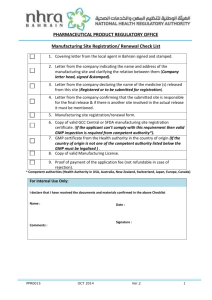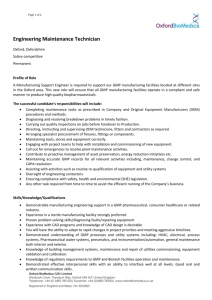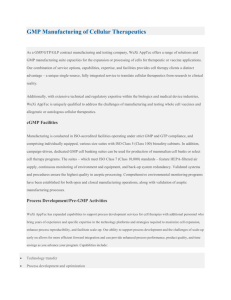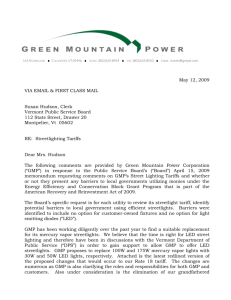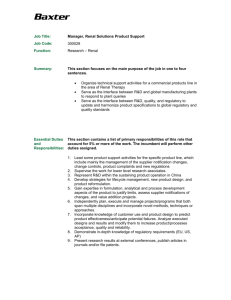GMP, a closer look
advertisement
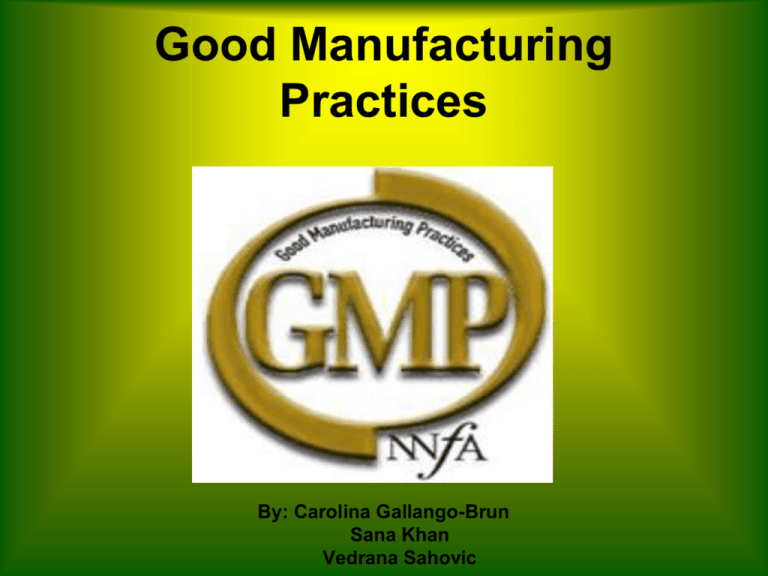
Good Manufacturing Practices By: Carolina Gallango-Brun Sana Khan Vedrana Sahovic The Early Beginnings • 1900s house-calls • Home remedies, ointments and “miracle elixirs” • Entertainment and music • No regulations until 1902 Fig. 1. Animation of ancient medicine show Public Involvement • 1905 - The Jungle by Upton Sinclair • Exposure of unsanitary conditions in meat packing plants Fig. 2. The Jungle by Upton Sinclair • Public awareness and involvement • Pure Food and Drug Act • False labeling became illegal Fig. 3. 1906 Meat processing plant What is GMP? • Good Manufacturing Practice is a set of regulations, codes, and guidelines for the manufacture of drug substances and drug products, medical devices, in vivo and in vitro diagnostic products, and foods. Fig.4 GMP handbooks for every industry Good Manufacturing Practices Worldwide Enforcement • Good Manufacturing Practices are enforced in the United States by the FDA • In the United Kingdom by the Medicines and Healthcare Products Regulatory Agency • GMPs are enforced in Australia by the Therapeutically Goods Administration • In India by the Ministry of Health, multinational and/or foreign enterprises • Many underdeveloped countries lack GMPs A Time line of GMP • • • • • • • • • • • • 1902 - Development of the Biologic Control Act 1906 - Development of the Pure Food and Drug Act 1938 - Federal Food, Drug and Cosmetic Act 1941 - Initiation of GMP 1944 - Development of Public Health Services Act 1962 - Kefauver-Harris Drug Amendments released 1963 - Establishment of GMPs for Drugs 1975 - CGMPs for Blood and Components Final Rule 1976 - Medical Device Amendments 1978 - CGMPs for Drugs and Devices 1979 - GLPs Final Rule 1980 - Infant Formula Act is passed 1941 Initiation of GMP • Sulfathiaziole tablets contaminated with phenobarbital • 1941 - 300 people died/injured • FDA to enforce and revise manufacturing and quality control requirements • 1941 - GMP is born Fig. 5 1906 Certificate of Purity signed by doctor 1962 Kefauver-Harris Drug Amendments • Thalidomide tragedy • Thousands of children born with birth defects due to adverse drug reactions of morning sickness pill taken by mothers • Strengthen FDA’s regulations regarding experimentation on humans and proposed new way how drugs are approved and regulated • “Proof of efficacy” law Fig 6. Kennedy signing the Kefauver – Harris Drug Amendments 1976 Medical Device Amendments • 1972 and 1973 Pacemaker failures reported • 1975 - hearing-Dalkon Shield intrauterine device caused thousands of injuries • Class I, II and III medical devices – based on degree of control necessary to be safe and effective Fig.7 President Gerald Ford signs the Medical Device Amendments 1980 Infant Formula Act • 1978 - major manufacturer of infant formula reformulated two of its soy products • 1979 - Infants diagnosed with hypochloremic metabolic alkalosis • Greater regulatory control over the formulation and production of infant formula Fig.8 Parody on Infant Formula Act Provisions 21 CFR Parts 210 and 211 (Drug Industry) 21 CFR Part 820 (Medical Device Industry) 21 CFR Part 110 (Food Industry) 21 CFR Part 606 (Blood Industry) Part 211 –Selected cGMP For Finished Pharmaceuticals • • • • • • • • • • • • • • • Subpart A-General Provisions Subpart B-Organization and Personnel 211.22 Responsibilities of quality control unit. 211.25 Personnel Qualifications. 211.28 Personnel responsibilities. Subpart C-Buildings and Facilities 211.46 Ventilation, air filtration, air heating and cooling. 211.58 Maintenance Subpart D-Equipment 211.63 Equipment design, size, and location. 211.65 Equipment construction. 211.67 Equipment cleaning and maintenance. 211.68 Automatic, mechanical, and electronic equipment. 211.72 Filters. • • • Subpart E-Control of Components and Drug Product Containers and Closures 211.80 General requirements. 211.82 Receipt and storage of untested components, drug product containers, and closures. 211.84 Testing and approval or rejection of components, drug product containers, and closures. 211.86 Use of approved components, drug product containers, and closures. Subpart F-Production and Process Controls 211.100 Written procedures; deviations. 211.101 Charge-in of components. 211.103 Calculation of yield. 211.105 Equipment identification. • .............. • • • • • • § 211.25 Personnel qualifications • (a) Each person engaged in the manufacture, processing, packing, or holding of a drug product shall have education, training, and experience, or any combination thereof, to enable that person to perform the assigned functions. Training shall be in the particular operations that the employee performs and in current good manufacturing practice (including the current good manufacturing practice regulations in this chapter and written procedures required by these regulations) as they relate to the employee's functions. Training in current good manufacturing practice shall be conducted by qualified individuals on a continuing basis and with sufficient frequency to assure that employees remain familiar with CGMP requirements applicable to them. • (b) Each person responsible for supervising the manufacture, processing, packing, or holding of a drug product shall have the education, training, and experience, or any combination thereof, to perform assigned functions in such a manner as to provide assurance that the drug product has the safety, identity, strength, quality, and purity that it purports or is represented to possess. • (c) There shall be an adequate number of qualified personnel to perform and supervise the manufacture, processing, packing, or holding of each drug product. • Good Manufacturing Practices (GMP) ensures quality assurance, compliance and good product development within the therapeutic goods industry. • Graduate Certificate, Graduate Diploma or Master of Science (Good Manufacturing Practices). • GMP courses are a joint initiative • The GMP courses are designed for people currently working, or intending to work in the pharmaceutical or biotechnological sectors. • Specialization in pharmaceuticals, biologics or medical devices • http://www.gmptrainingsystems.com/?gclid=CKyi-tS1JUCFQM1gQod3m9cjg GMP Training • GMP Training Products • In-Plant Training Programs • Interactive Computer-based GMP Training • Web-based GMP Training • Public Workshops • GMP Implementation Resources http://www.gmptrainingsystems.com/PDF/Sample_Write _it_down_handout.pdf Career Opportunities • • • • • • • International Quality Assurance Manager Senior Quality Assurance Manager Quality Assurance Associate - QA - (GMP) Pharmaceutical - Quality Manager GMP / GCP Manager Packaging Operator Line Service Operator References Blackwell, John. 1906: Rumble Over ‘The Jungle’. 31 Aug. 2008. http://www.capitalcentury.com/1906.html FDA Food and Drug Administration. GMP Combination Handbooks. 31 Aug. 2008. http://images.google.com http://freepages.genealogy.rootsweb.ancestry.com/~myhadlfamily/hadl/hadlstories/phoeni17 .jpg The Center for Professional Advancement. Good Manufacturing Practice. 2008. 1 Sep. 2008. http://www.cfpa.com/gmp-training The Power of Story Telling. A Brief History of the GMPs. 2004. 31 Aug. 2008. http://immelresources.com/HistoryofGMPs.pdf The New York Times. 1906 Meat Processing Plant. 26 Jan. 2005. 31 Aug. 2008. http://www.nytimes.com/imagepages/2005/01/26/national/26meat.ready.html Torrent Pharmaceuticals Ltd. Pharmaceutical GMP: past, present, and future–a review. 2008. 31. Aug. 2008. http://www.atyponlink.com/GVR/doi/abs/10.1691/ph.2008.7319?cookieSet=1&journalCode=phmz Questions?
